
by Natalie Devitt
Spacewrecked
According to the previews for Robinson Crusoe on Mars, the movie is "scientifically authentic. It is only one step ahead of present reality." This update of Daniel Defoe’s 1719 novel Robinson Crusoe is directed by Byron Haskin, best known for directing The War of the Worlds, which was produced by George Pal (The Time Machine (1960)). Haskin and Pal have also made another picture that attempted to depict a more accurate Mars: Conquest of Space (1955). Intrigued by these films and interested in Haskin’s more recent work on some of my favorite entries of The Outer Limits thus far, like The Architects of Fear and A Feasibility Study, I was determined not to miss Robinson Crusoe on Mars.
So, is the movie worth a trip to your local theater?
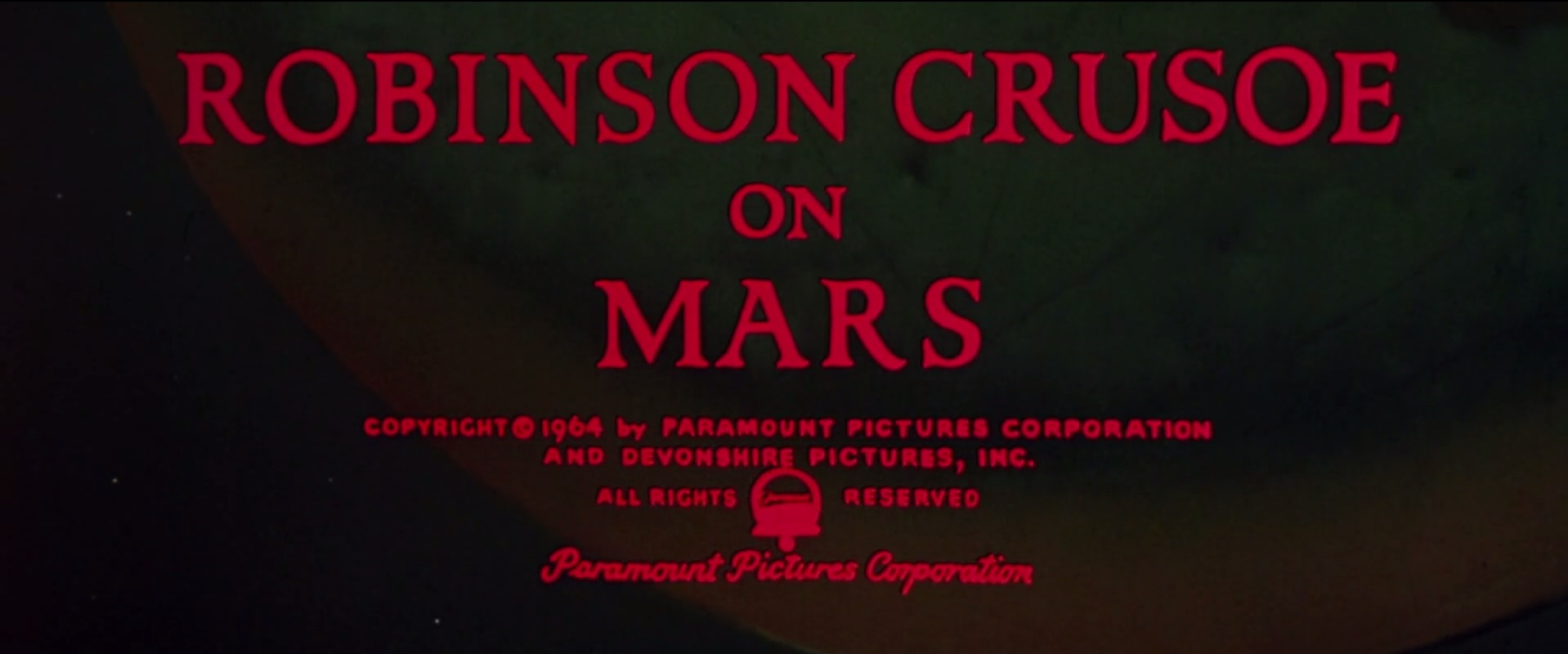
The movie opens up aboard a spaceship carrying Commander Christopher Draper (played by Paul Mantee, appearing in his first film major film role), Colonel Dan McReady (Adam West, an actor commonly found on television westerns) and an adorable monkey named Mona. Things take an unexpected turn when they detect a meteoroid and are "forced out of orbital velocity to avoid collision with planetoid into tighter orbit of Mars." As the situation worsens, the crew is left with no other option than to immediately attempt to land on the fourth planet. While fleeing the vehicle in their individual escape pods, Draper is separated from McReady and Mona.
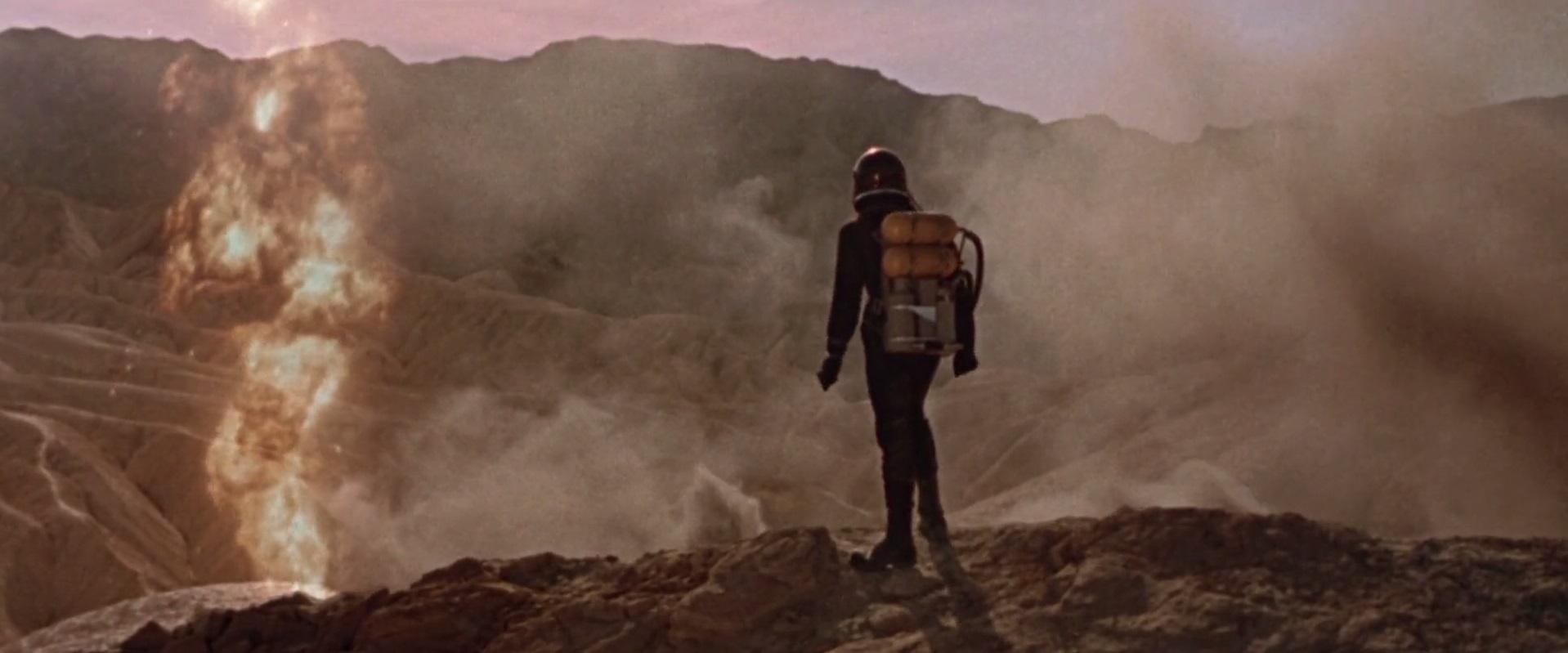
Welcome to Mars
Draper adapts to the conditions on the red planet, while searching for McReady and Mona. Even though he is part of the first crew on Mars, Draper learns quickly what it takes to survive. He finds shelter in a cave. For heat, Draper discovers yellow rocks that "burn like coal.” Heating the rocks not only keeps him warm, but also produces oxygen, which he then uses to refill his oxygen tank. Throughout the film, Draper keeps a careful audio record about all that he experiences, which provides a useful narrative device when things happen off-screen.
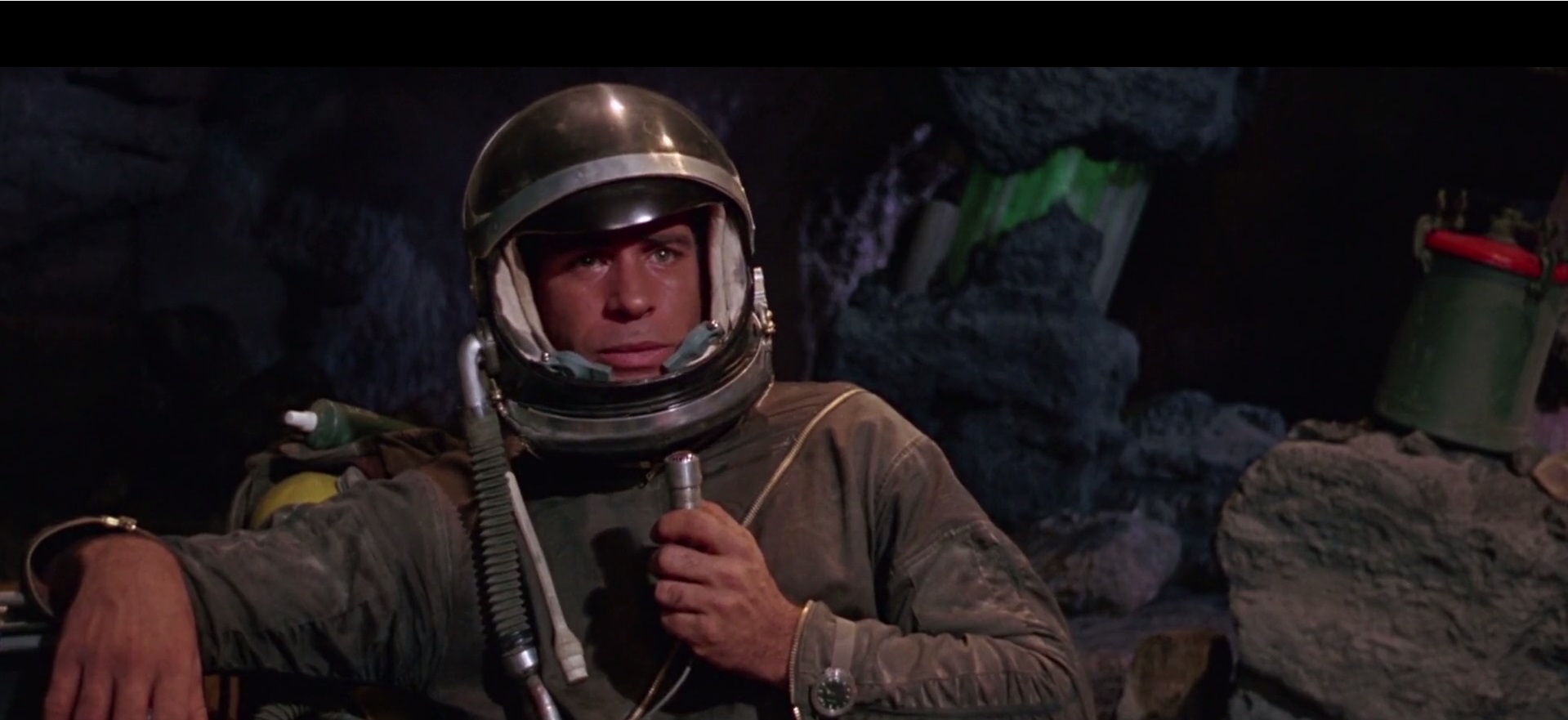
After many days, Draper finally locates McReady’s pod, but the poor colonel did not survive the landing. Shortly after giving McReady a proper burial, Draper runs into Mona, who is happily alive. Reunited with her and assuming that they are all alone, Draper tries rationing what little food and water they have. Surprisingly, the reduced rations do not seem to bother Mona one bit. She "spends most of her days off somewhere." Finding this unusual, Draper devises a plan, which involves feeding her a salty meal without water, believing that she might be able to lead him to a water source. Sure enough, she does — an underground hot spring. In the water, Draper also notices some strange plant that his little primate pal is eating, which resembles seaweed on the outside, but once peeled, contains something that looks an awful lot like sausage. Draper calls it "Martian food." He soon finds that the plant has several other uses, because you can "eat it, weave it and you wear it.”
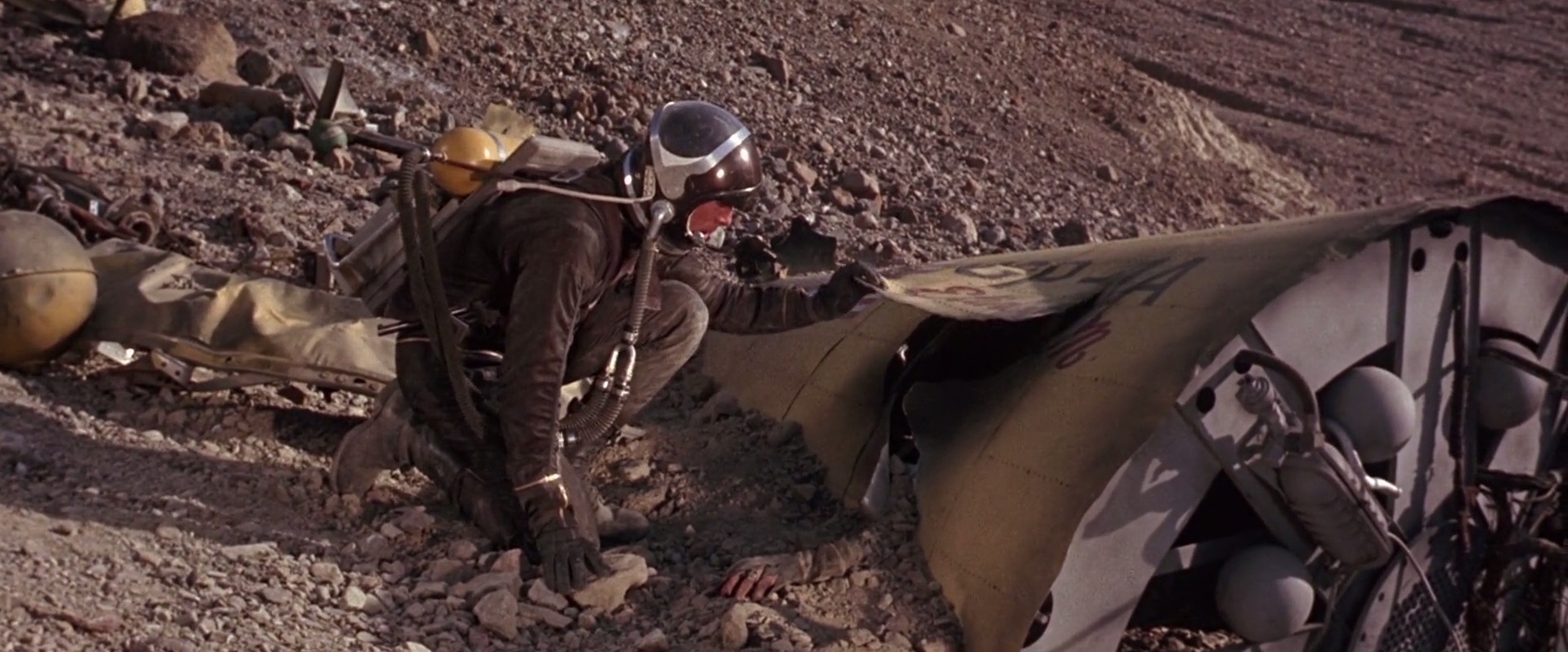
No happy sunset for Adam West this time
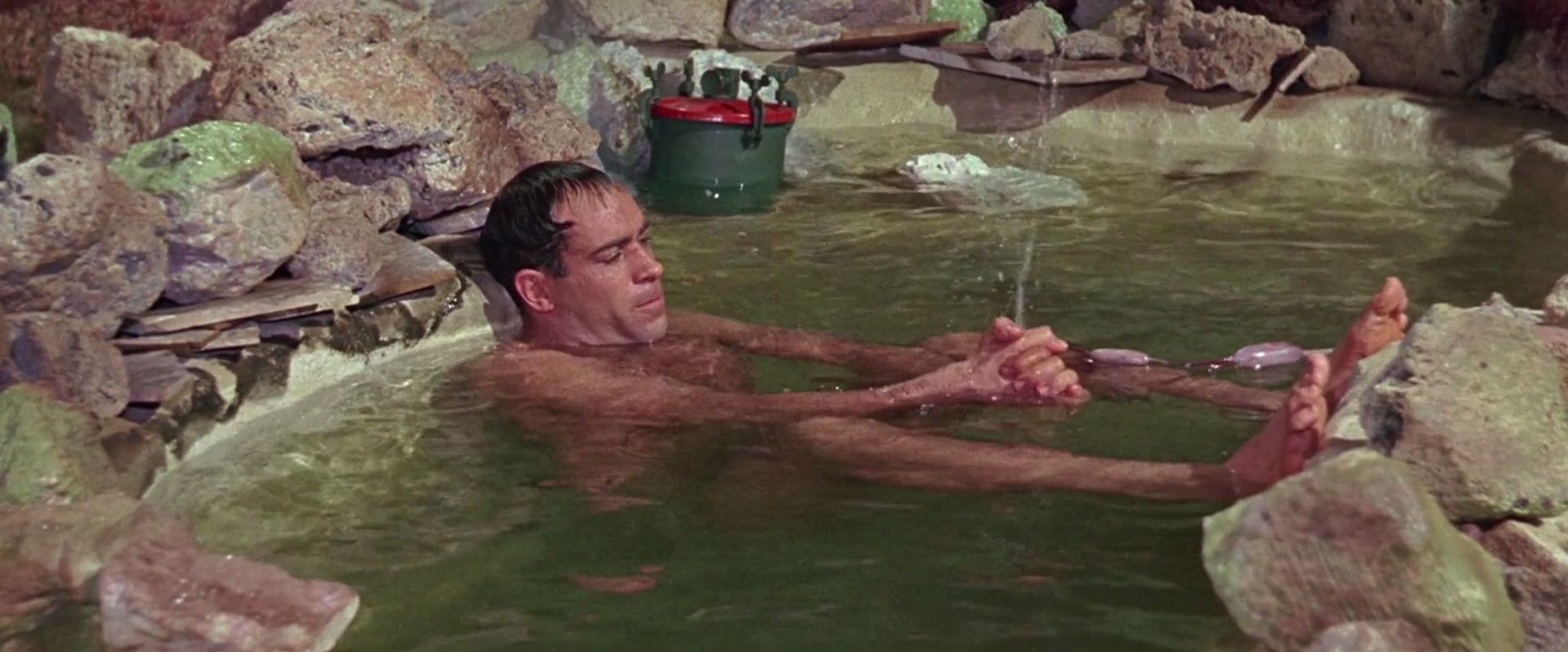
Martian hot springs
After more than four months on Mars, Draper longs for human companionship. All of his training has not prepared him for the extreme isolation he experiences while stranded on a strange planet, and his mind begins playing tricks on him. Snapping out of an episode in which he is visited by the ghost of Colonel McReady, he concludes that "a guy can lick the problems of heat, water, shelter” and that that loneliness is the greatest obstacle that he has encountered while on the planet. Around this time, he stumbles upon alien remains. On the extraterrestrial skeleton are strange black bangle bracelets. Draper believes that the being is a murder victim due to its skull showing signs of trauma and being charred.
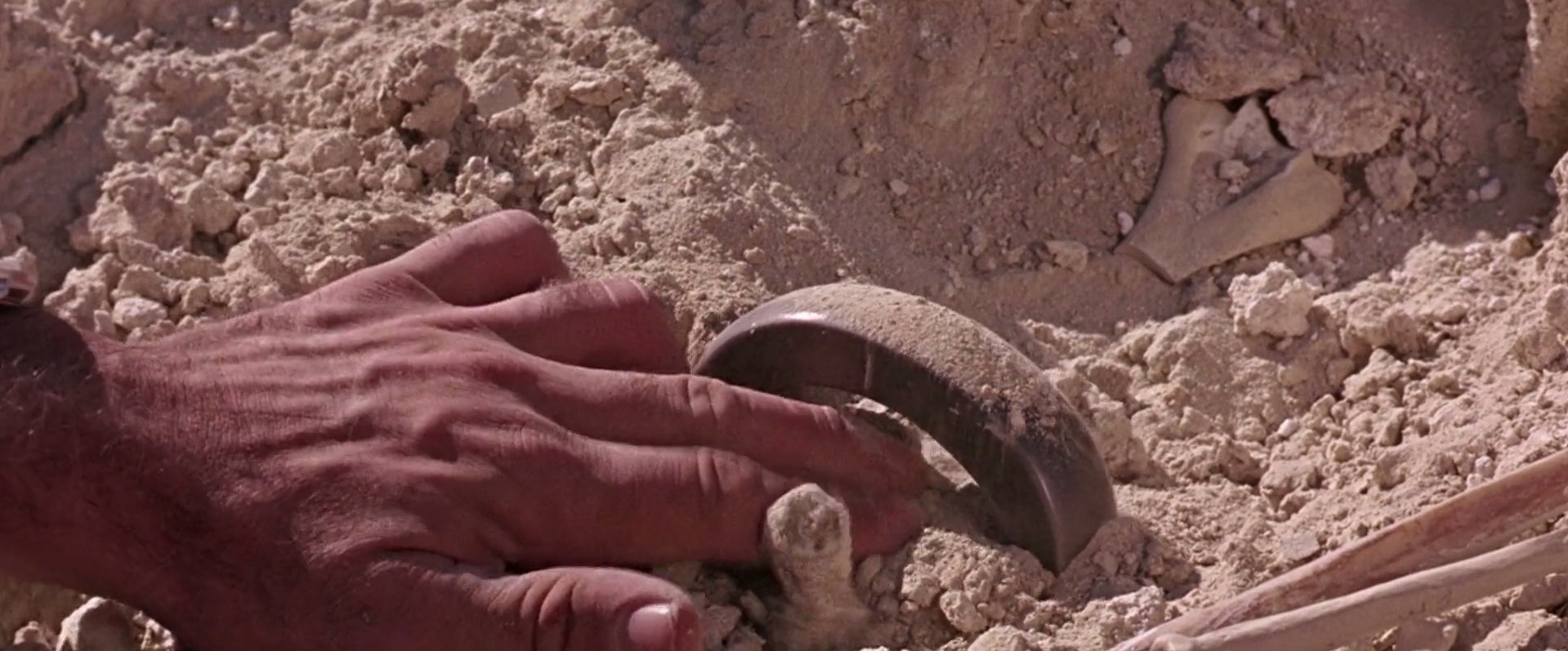
Later, Draper's radio picks up signals of an "interplanetary vehicle.” Draper rushes toward the spaceship, only for its crew to shoot directly at him and narrowly miss. In the chaos, Draper runs into an alien bearing a striking resemblance to a man, dressed in clothing that looks straight out of some ancient civilization, with black bracelets on both wrists identical to the ones he found on the skeleton earlier. He soon realizes that the alien (played by Victor Lundin of Ma Barker’s Killer Brood) is an escaped slave who worked in mines on Mars, while other human-like creatures in spacesuits held the slaves at gun-point.
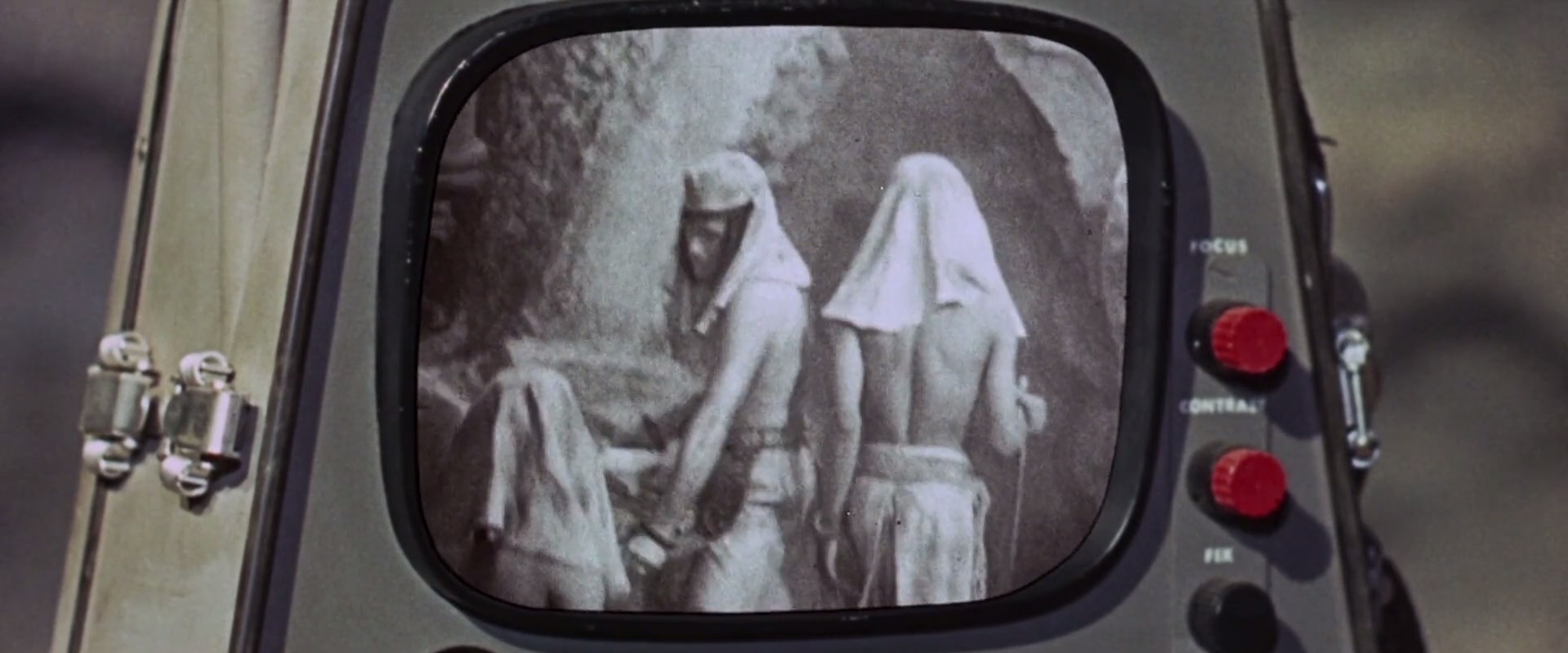
Hebrews building the Martian pyramids
Draper feeds the slave and offers him a place to stay. Draper believes that the slave owners are from a planet "other than Mars” and that they handle their slaves "electronically”, using the black bangles. He names the slave, who he presumes to be mute, "Friday, with apologies to Robinson Crusoe."
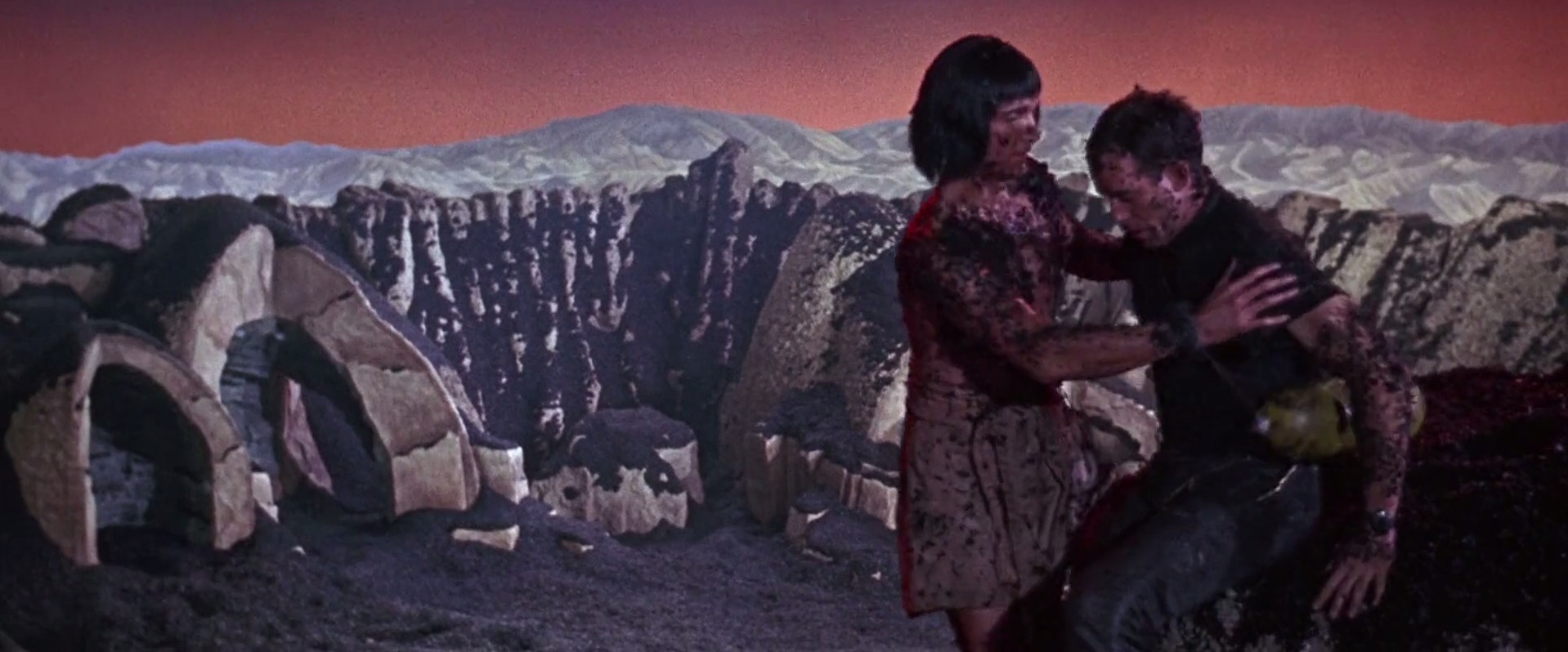
Friday, as it turns out, is actually capable of speech. Once Draper realizes this, he tells Friday, "You’re going to learn English, if I have to sit on your chest for two months.” The two eventually become close friends. Friday is part of an alien species originally from ”the center of the belt of Orion.” Friday shares with Draper painful memories of working in the mine. The alien also expresses concern that "the enemy" will use his bracelets to track him down, so Draper tries to help Friday remove them. Friday’s captors return for him, but Friday, Draper and Mona are determined to stick together.
Thus ensues a long trek to the Martian North Pole, mostly underground to avoid the slavers. This portion of the film is very scenic, although not much happens. Upon reaching the polar ice caps, Draper picks up a spaceship again…but this time, it's an Earth rescue vessel. The three will be saved.

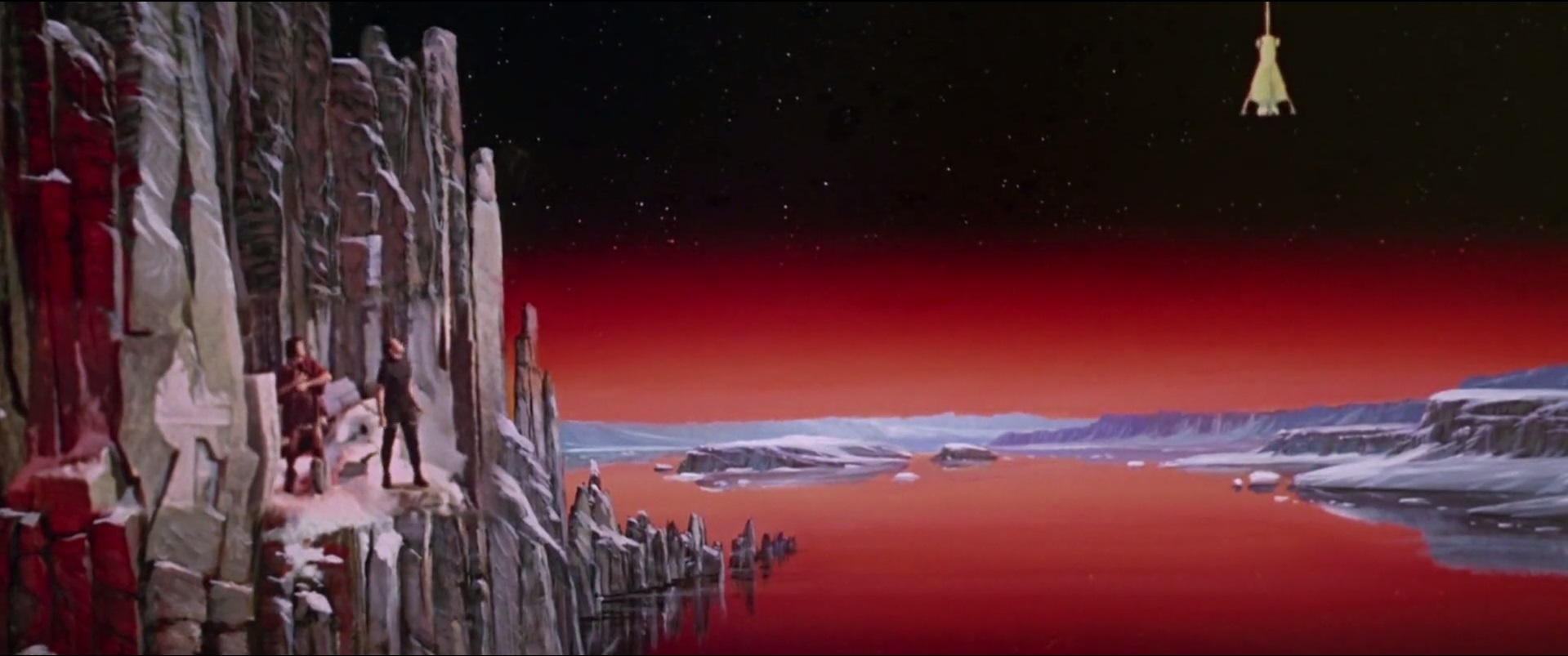
A Mixed Bag of Oxy-rocks
Robinson Crusoe on Mars feels like two completely different movies in one, due to its changing tone midway. The first half of it is a much more serious and slow story about a man’s struggle for survival. But once Friday enters the picture, things speed up and get a lot sillier. To be perfectly honest, the transition from one part to the other is not as smooth as I would have liked. That said, screenwriters Ib Melchior (The Seventh Planet) and John C. Higgins do a surprisingly good job of bringing Defoe’s story to space.
The first half of the movie is not just slow, but also fairly quiet. Most spoken words are Draper recording himself or talking to a pet monkey. Draper seems like a person with good intentions, but I have to admit he is not the friendliest guy and often treats Mona better than Friday. Draper whines about not having someone besides Mona and when he finds someone kind of like a human, he treats him pretty poorly at first.
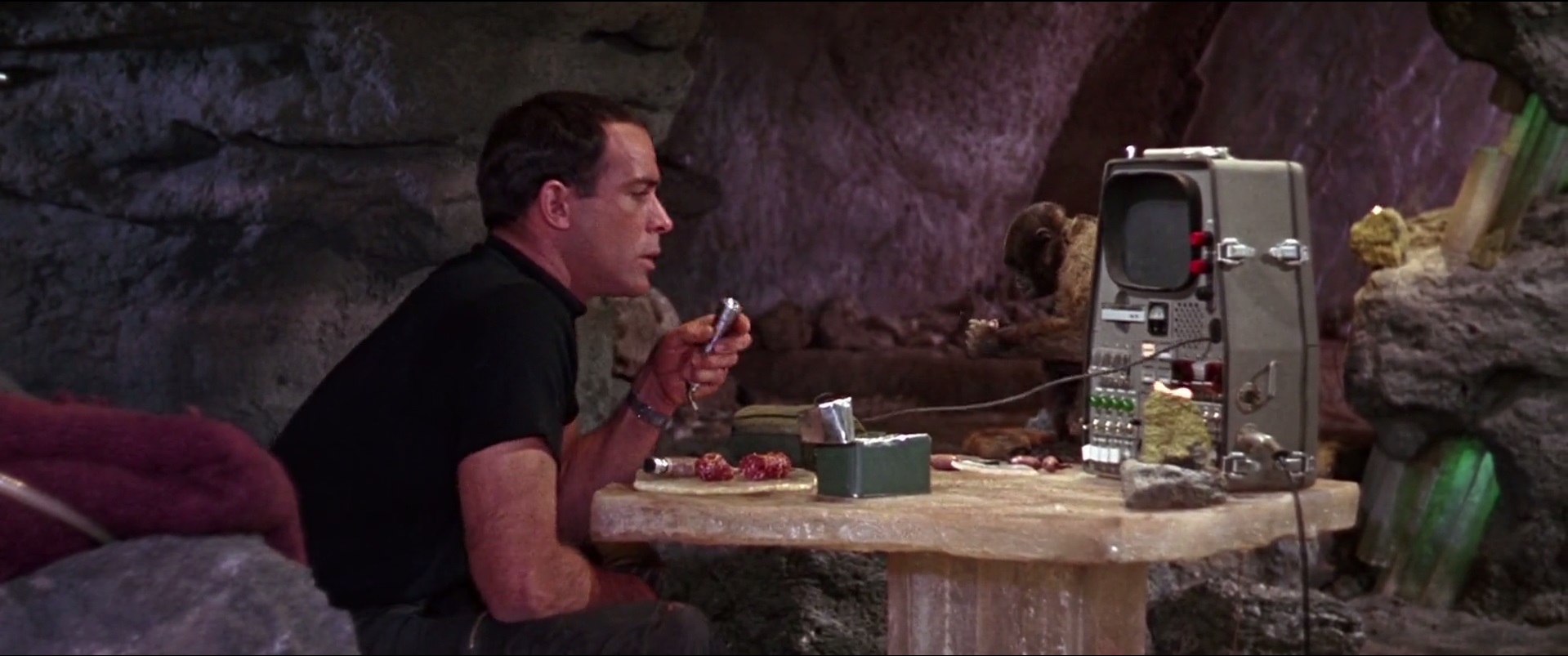
Single living on Mars is a drag
To the movie’s credit, Robinson Crusoe on Mars does seem to be much more rooted in science than many science fiction films that came before it. Most equipment used by the actors seems fairly realistic. The actors are pretty believable operating their spaceship and using different devices. Many of the characteristics of Mars seem a bit more accurate than you tend to see in the movies. Still, one has to suspend disbelief to enjoy the film.
My big issue with the film was the way it handles the planet’s lack of oxygen, which the characters deal with by consuming their pills that "bypass the lungs and produce oxygen right in the blood”, or using an oxygen tank as sparingly as once every 10-15 minutes. It's not that there isn't enough oxygen, but that there is still probably far too much compared to what we actually know of Martian conditions. There are also fires that manage to burn heartily on Mars’ surface, despite the lack of oxygen, though they did contribute to the overall look of the film.

Two ways to deal with the lack of oxygen on Mars
Visually, Robinson Crusoe on Mars is a stunning achievement. It is more than a movie, it is an experience with Winton C. Hoch’s gorgeous Technicolor photography, Matte paintings by Albert Whitlock, and auroras which dance in the sky to yet another memorable score by Nathan Van Cleave. The highly-saturated colors and all the Death Valley exterior shots look incredible on the big screen. Also, fans of 1953’s The War of the Worlds might be amused by some of the miniatures used in the film.

Alien craft looking…strangely familiar.
All in all, I am happy to report that I did not leave the theater disappointed. The movie is worth the price of a ticket, and I hope it gets the attention it deserves. Reportedly, the picture was made independently and distributed through Paramount. The film is superior to many movies with much larger budgets, which is why I am giving it a pretty solid three stars.
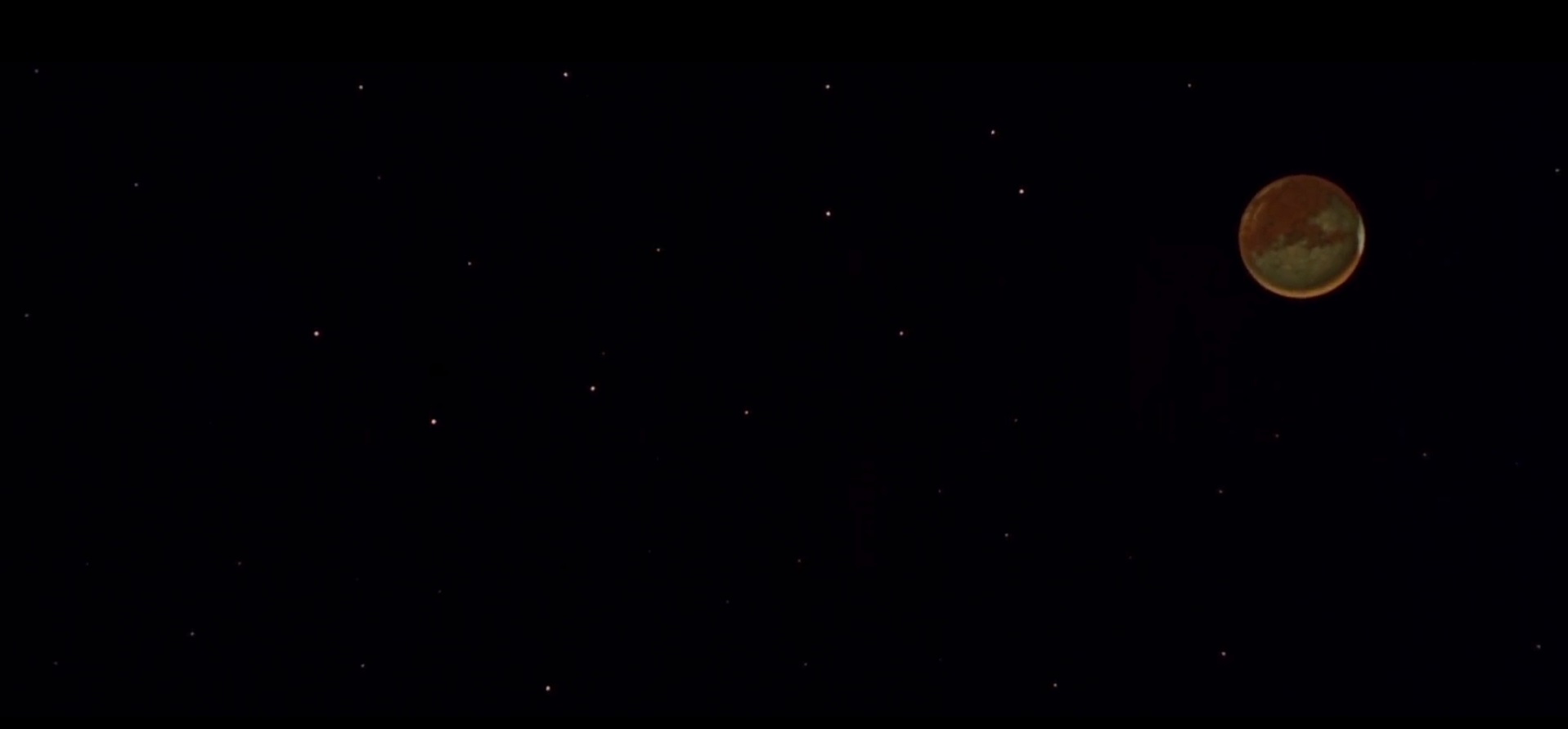
[Come join us at Portal 55, Galactic Journey's real-time lounge! Talk about your favorite SFF, chat with the Traveler and co., relax, sit a spell…]



I caught this flick and whilst I have to say I don't disagree with any of your points for me I did come out feeling disappointed. I know it is entirely a subjective reaction but I found the first half tedious quickly and the second half really silly. It looks beautiful and the elements are all there for the kind of film I want to see but I was very soon looking at my watch.
Thanks for stopping by, Hammard. I found myself feeling utterly neutrally about the movie. It left little impact, and I have to applaud Natalie for finding things to say about the film!
Despite its scientific holes, I still enjoyed the film too. Of course, I always enjoy any retelling of Robinson Crusoe. In some ways, I wish the film had been only about Draper's surviving alone, even indefinitely. I oddly enjoy the last person in the world stories.
Me too, actually.
I really enjoyed this one. Sure, it's not as scientifically accurate as it claims to be; the hero survives much too easily (particularly when he discovers what I call the hot dog plants); it's a bit pulpy, particularly in the second half; but it kept me completely entertained all the way through.